In this post, we describe formaldehyde, a harmful chemical that can cause irritation, allergic reactions and cancer. We explain where formaldehyde can occur, such as in cosmetics, cleaning agents and new clothes, and why it is important to avoid it. In addition, we list different names formaldehyde can appear under in ingredient lists, which helps you identify and avoid the substance.
_
Formaldehyde is a good substance to start looking for when you have decided to start reading ingredient lists. It is a substance where the documentation of the harmful effects is solid. A good substance to watch out for, quite simply. Now it is not as simple as it says FORMALDEHYDE clearly and distinctly in the ingredient list, it can be called a lot of other things too, therefore there is a list below with different names.
So what is formaldehyde?
Formaldehyde, methanal, is a colorless gas with a pungent odor. Formaldehyde dissolved in water is called formalin. Formaldehyde is an important basic chemical that is used as a material in several industrial processes, such as plastic manufacturing, glue etc.
In its pure form, formaldehyde is used as a preservative and can be found in cosmetics, hygiene products and cleaning agents. Formaldehyde can also be found in new clothes and that is one reason why you have probably read or heard that you should wash new clothes before using them.
Further down in this text there is a list of what formaldehyde can look like in an ingredient list.
Formaldehyde even at low concentrations in the air causes irritation in the eyes and respiratory tract in many people. Formalin (formaldehyde dissolved in water) can also cause allergic eczema. Research has also shown that formaldehyde is carcinogenic.

Formaldehyde is classified by the National Toxicology Program in the USA and by the International Agency for Research on Cancer (IARC) as carcinogenic to humans based on increased incidence of cancer in the nasal cavity and leukemia in occupationally exposed people.
Read more here: https://www.vetenskaphalsa.se/vad-ar-formaldehyd/
Below is a list with the INCI name of the most common formaldehyde releasers (in parentheses are other names that can sometimes be used):
2-Bromo-2-nitropropan-1,3-diol (Bronopol)
5-Bromo-5-Nitro-1,3-Dioxane (Bronidox)
Diazolidinyl urea (Germall II)
DMDM Hydantoin Imidazolidinyl urea (Imidurea, Germall 115)
Quaternium 15 (1-(3-Chloroallyl)-3,5,7-triaza-1-azoniaadamantane chloride)
Examples of formaldehyde-releasing preservatives that may occur in the working environment: Glydant
Grotan BK
Grotan OX
Grotan WS
Parmetol K50
Preventol D2
Dowicil 75
Dowicil 200
Formalin Methylaldehyde Methanal Oxymethylene INCI name: Formaldehyde. CAS no. 50-00-0
____________________________________________________________________________
Questions and Answers
Why is it important to avoid formaldehyde in products?
Formaldehyde is a harmful chemical that can cause irritation in the eyes and respiratory tract, allergic eczema and is classified as carcinogenic. Therefore, it is important to avoid products that contain this chemical to protect health.
In which products can formaldehyde be found?
Formaldehyde can be found in cosmetics, hygiene products, cleaning agents and new clothes. It is also used in industrial processes for plastic manufacturing and glue. Washing new clothes before use can help reduce exposure.
How can you identify formaldehyde in ingredient lists?
Formaldehyde can appear under different names in ingredient lists. Some examples of formaldehyde-releasing substances include Bronopol, Bronidox, Germall II, DMDM Hydantoin, Imidurea, Quaternium 15, and Glydant. Knowing these names can help you avoid products that contain formaldehyde.
To Västerbottenssåpa's products
